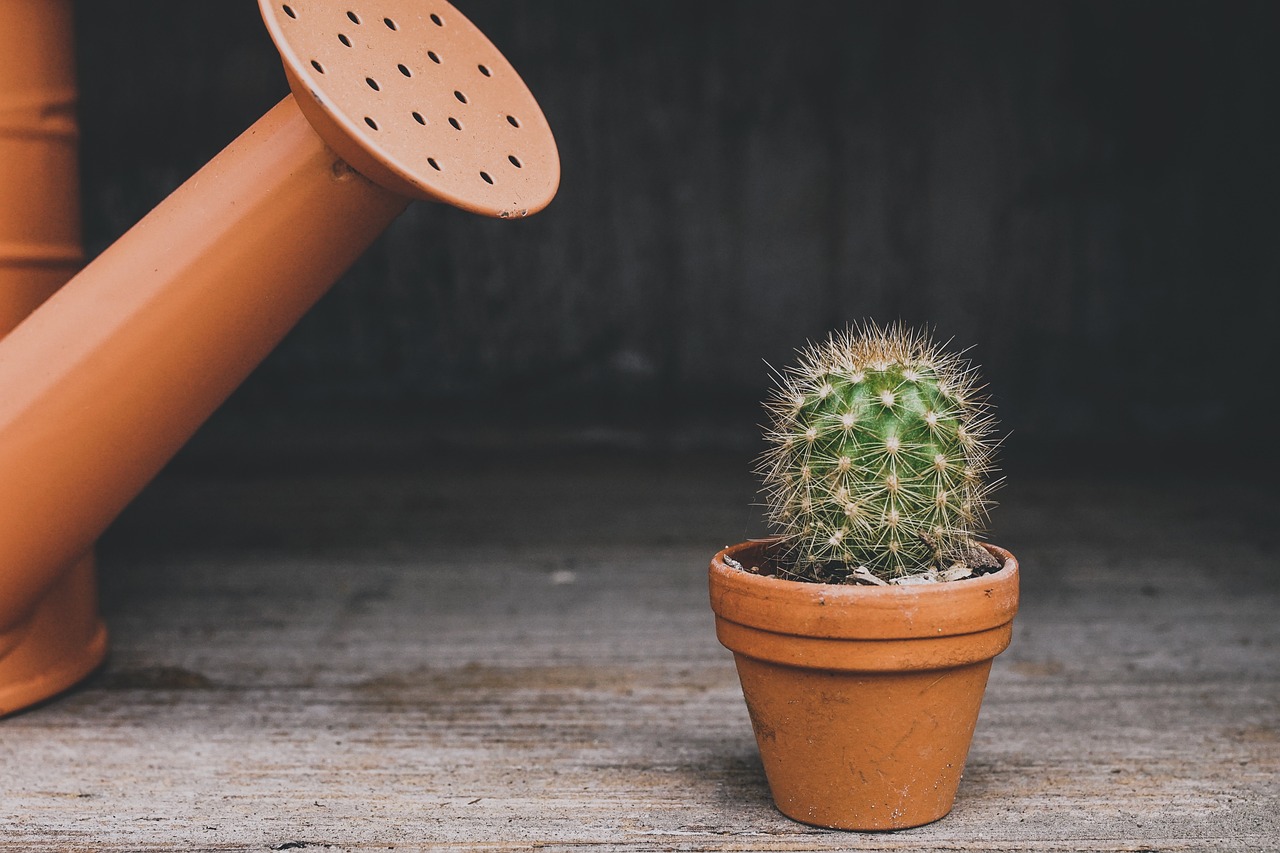Cacti are well-known for their hardiness and capacity to flourish in arid regions, but they must still be watered properly. Proper watering is critical for the health of your cactus since it significantly impacts its development and longevity.
How often should you water your cactus?
The watering frequency is determined by various factors, including the season, the size of the cactus, and the habitat in which it grows. Cacti typically require watering every two to three weeks during the growing season (spring and summer).
During the dormant season (autumn and winter), watering can be reduced to once a month or less, depending on humidity and temperature.
Signs of Overwatering
Overwatering is one of the most prevalent issues encountered by cactus owners. Signs include:
- Yellowing or weakening of stems signals that the plant absorbs too much moisture.
- Mushy or decaying roots: If roots become mushy, it indicates overwatering.
- An unpleasant odor from the soil may indicate root rot.
Signs of Underwatering
Underwatering, on the other hand, can be bad for your cactus. Look for the following signs:
- Wrinkled or shriveled stems suggest that the cactus isn’t getting enough water.
- Discoloration: A cactus may start to turn a lighter color or become dull.
- Dropping pads or spines: A more extreme reaction indicating that the plant is struggling.
Choosing the Right Type of Water
Water quality is critical to the health of your cactus. Distilled or rainwater is preferable since it is free of the minerals and contaminants usually found in tap water. If you’re using tap water, let it sit for at least 24 hours to let the chlorine out.
The Importance of Proper Drainage
Cacti thrive on well-drained soils. Make sure the pots have drainage holes to let excess water escape. Using a potting mix meant for cacti or succulents will help to prevent water collection, lowering the danger of root damage.
Selecting the Right Soil Mix
An optimal cactus soil mixture should include various components that enhance drainage. Search for a mix that includes:
- Cactus potting soil.
- Perlite and pumice increase drainage.
- Coarse sand promotes aeration.
Ideal Conditions for Watering
Cacti prefer to dry out in between waterings. It is critical to monitor the soil moisture before watering to avoid the dangers of overwatering. Before administering water, ensure the soil is dry to at least an inch deep.
Timing Your Watering Schedule
Watering should be done early while temperatures are lower. This reduces evaporation and helps the plant absorb water efficiently before the day’s heat.
Environmental Factors Affecting Watering Needs
Watering requirements for your cactus are determined by temperature, humidity, and light exposure. A cactus planted in a more humid climate may require less frequent watering than one in a dry, heated one.
Techniques for Watering Cacti
When watering your cactus, use the following techniques:
- Bottom watering: Immerse the pot in a water dish for 30 minutes to allow the roots to absorb moisture from the bottom.
- Soaking method: For larger cacti, immerse the pot in water for 30 minutes every few weeks.
Preventive Measures Against Root Rot
To avoid root rot, it is necessary to:
- Always choose well-drained soil.
- Ensure that the pots contain drainage holes.
- Avoid allowing the cactus to sit in standing water.
Maintaining Optimal Soil Moisture Levels
A water meter can help you precisely monitor soil moisture levels. Alternatively, insert your finger into the soil to determine moisture depth. Adjust your watering schedule based on these findings.
Testing Soil Moisture
To ensure good health, consider directly testing the soil moisture. A soil moisture meter is a great tool for getting exact readings and determining when to irrigate.
Adjusting Watering Techniques by Season
Watering schedules should be altered according to the season.
- Spring and summer require more regular watering because the plants grow actively.
- Fall and winter: As plants enter dormancy, irrigation should be reduced slightly.
Common Mistakes in Cactus Watering
Avoid making these mistakes:
- Watering on a set timetable without checking the soil moisture.
- Use non-draining containers or heavy soil to maintain moisture.
- Ignore seasonal fluctuations and the cactus’ development cycles.
Tips for Repotting and Watering
Repotting your cactus provides a new start and ensures that it has the necessary space and nutrients to grow. Here are some useful tips to keep in mind:
- Choose the Right Pot: Look for a pot with adequate drainage holes. Cacti require a pot that enables excess water to drain, preventing wet soil, which can cause root rot. Terracotta pots are popular because they draw moisture away from the soil.
- Repotting a cactus is best done during its growing season, normally in the spring or early summer. This permits the plant to recover from the stress caused by being disrupted.
- Handle with Care: Cacti have spines that can cause pain if improperly handled. When transferring your plant from its old pot, use gloves or tongs and proceed with caution.
- Prepare the Soil: Use a specialized cactus mix with good drainage and aeration. You can also create your mix by combining potting soil, sand, and perlite.
- Watering After Repotting: Leave the roots to heal in their new environment for about a week before watering again. This helps to prevent root rot in moist soil.
After repotting, watch for evidence of new growth, which suggests that your cactus is responding well to its new environment.
Final Thoughts
Caring for cacti can be a gratifying experience if you understand their specific demands. Understanding the fundamentals of hydration, lighting, and soil selection may help your spiky buddies have a long and healthy life.
